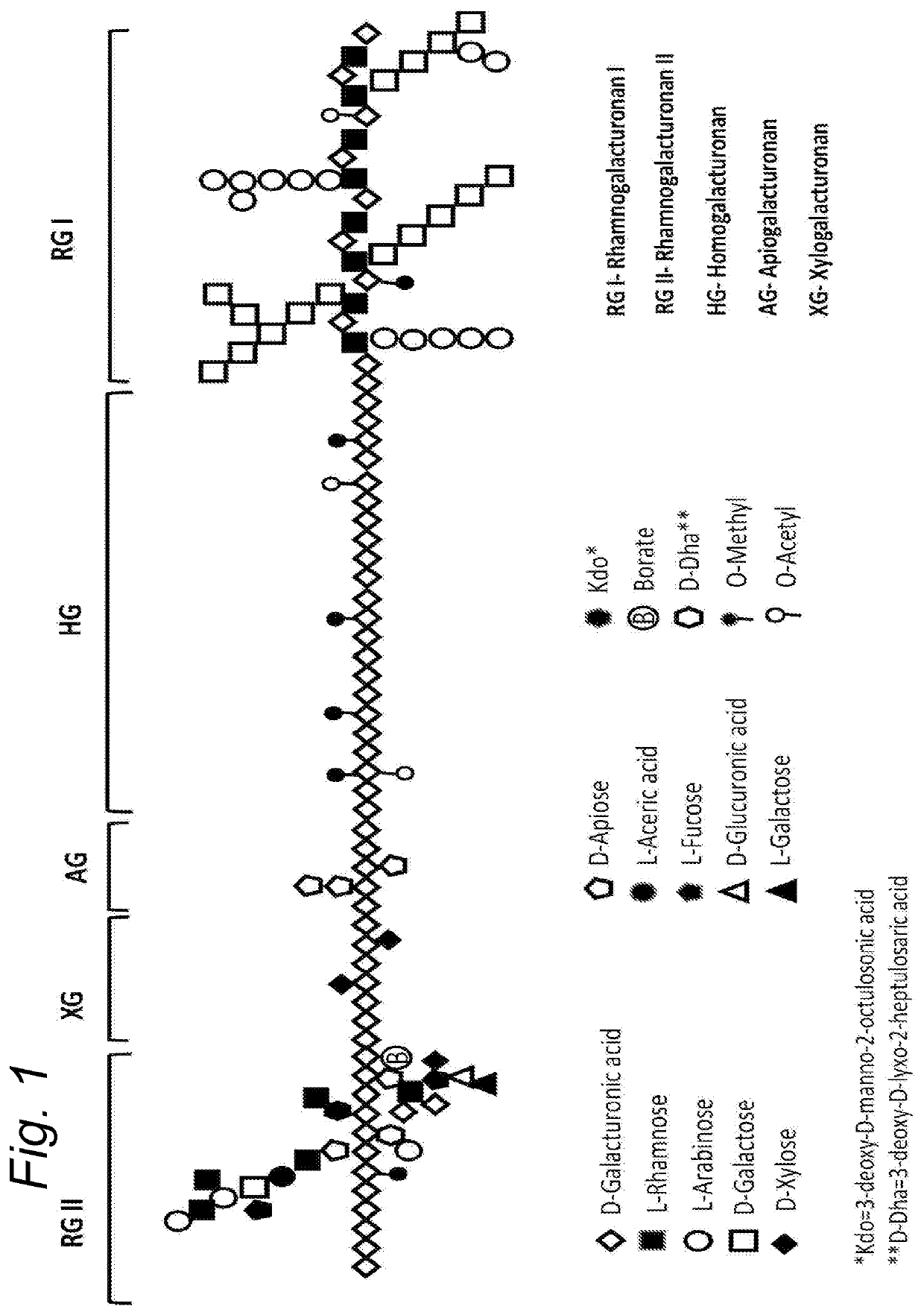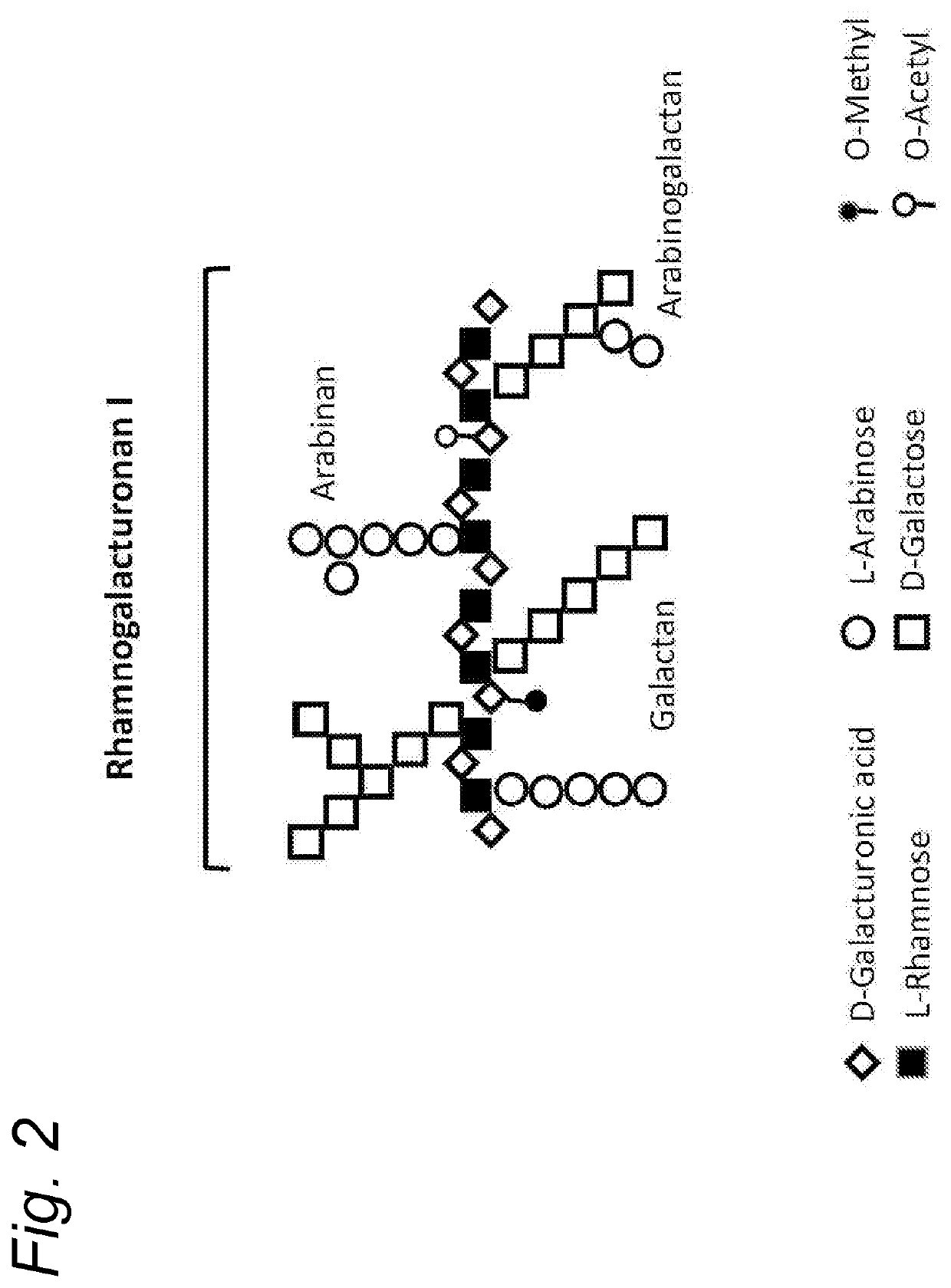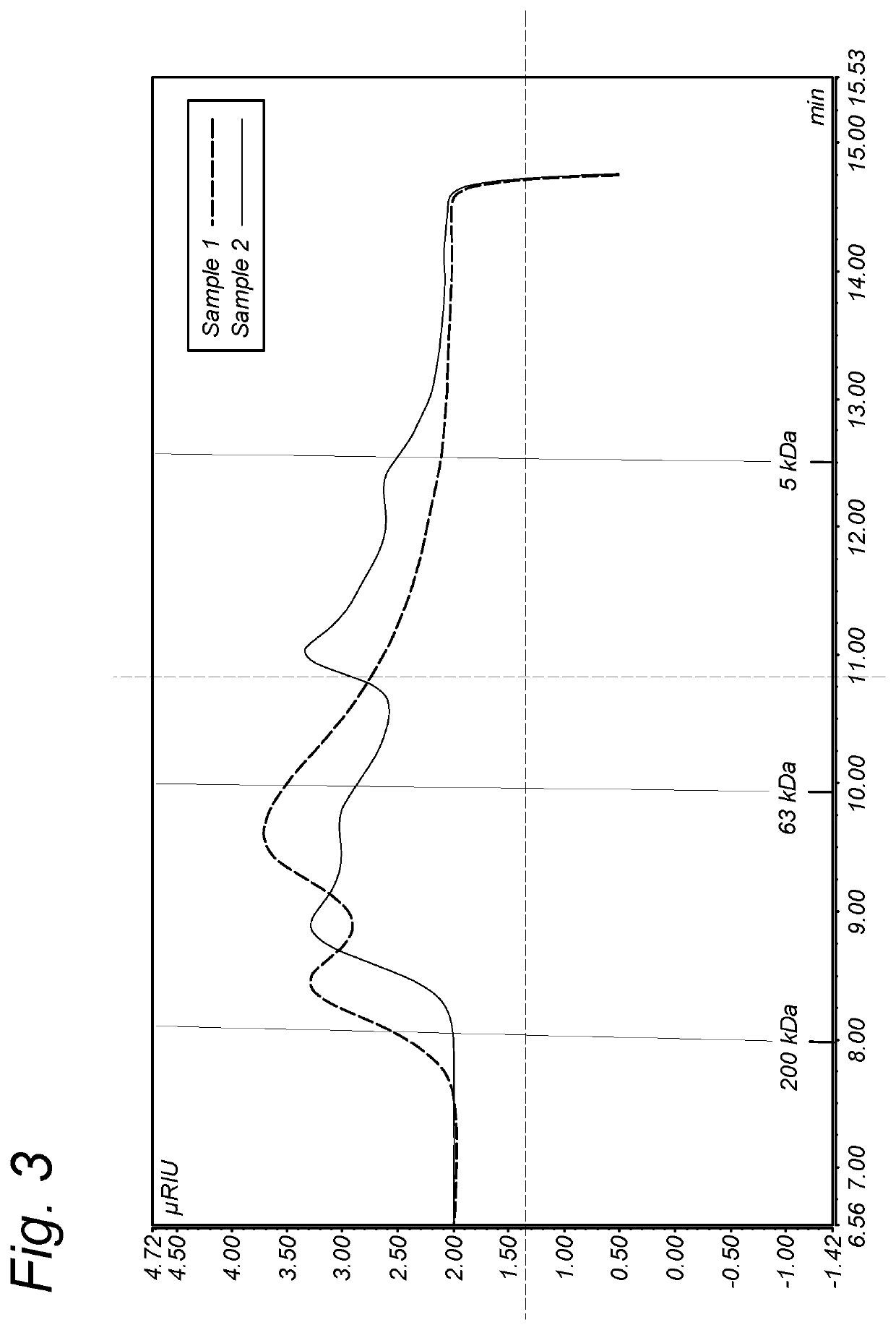Enzymatically hydrolysed pectic polysaccharides for treating or preventing infections
a pectic polysaccharide and hydrolyzed technology, applied in the direction of lyase, transferase, drug composition, etc., can solve the problems of dehydration and lack of energy, and achieve the effects of improving infection resistance, cost-effectiveness, and modulating functional responsiveness
- Summary
- Abstract
- Description
- Claims
- Application Information
AI Technical Summary
Benefits of technology
Problems solved by technology
Method used
Image
Examples
example 1
[0153]Dried carrot pomace (carrot fibre powder, GreendFields, Poland), the residue of carrot juice production, was dispersed in demineralised water (100 g / 1) and subjected to enzymatic hydrolysis on labscale using 3 different commercial enzymes (enzymolysis conditions: 45° C., 120 minutes):
1. Pectinex® Yield Mash ex Novozymes (0.02% of total dispersion)
2. Pectinex® Ultra Mash ex Novozymes (0.02% of total dispersion)
3. Pectinex® Ultra Mash ex Novozymes (0.05% of total dispersion)
[0154]Enzymolysis was terminated by heating at 90° C. for 10 min, followed by centrifugation and dialysis of the supernatant using a membrane with a 10 kDa cut off (Microdyn Nadir; UP010).
[0155]A reference isolate was produced by introducing the dried carrot pomace in water (100 g / 1), keeping the solution for 120 minutes at a temperature of 90° C., centrifugation, and dialysis of the supernantant by means of dialysis in the same way as the enzymolysed dispersions.
example 2
[0156]The monosaccharide composition of the non-hydrolysed carrot RG-I polysaccharide of Example 1 (Reference) and of the enzymatically hydrolysed carrot RG-I polysaccharide of Example 1 (Samples 1 to 3) was determined as follows:
[0157]The concentration of different polysaccharides and their monosaccharide composition were determined using the analytical methods described in: Analytical Biochemistry Vol. 207, Issue 1, 1992, pg 176 (neutral sugar analysis) and in Mol. Nutr. Food Res., Vol 61, Issue 1, 2017, 1600243 (uronic acid analysis and molecular size distribution).
[0158]The results of the monosaccharide analysis are shown in Table 1 (Rha=rhamnose; GalA=galacturonic acid; Ara=arabinose; Gal=galactose.
TABLE 1Mol. %Mol. %Mol. %Mol. %SampleRhaGalAAraGal[GalA]:[Rha][Gal]:[Rha][Ara]:[Rha]Reference662141610.32.72.31104519234.62.32.02173528162.11.01.63134723153.71.21.8
example 3
[0159]The immunomodulating activity of the non-hydrolysed carrot RG-I polysaccharides of Example 1 (Reference) and of the enzymatically hydrolysed carrot RG-I polysaccharides of Example 1 (Samples 1 to 3) was determined using a human peripheral blood mononuclear cells (PBMC) assay.
[0160]To assess the effect of the polysaccharide materials on immune function they were incubated with freshly isolated Peripheral Blood Mononuclear Cells (PBMC). In brief, PBMC were isolated from buffy coats of blood using Ficoll-plaque (Amersham). PBMC (2*10E6 cells / mL) were incubated in RPMI medium (Gibco™ RPMI 1640 Medium) with 300 μg RG-I polysaccharides for 20 hr (5% CO2, 37° C.). Subsequently, supernatants were harvested and cytokines were measured using a bead array (CBA human inflammation kit, BD-Bioscience) measured on a flowcytometer (BD FACSCANTO II) according to the manufacturer's instructions. RPMI was used as negative control and LPS (from E. coli—Sigma L3012-5mG) as ...
PUM
| Property | Measurement | Unit |
|---|---|---|
| Fraction | aaaaa | aaaaa |
| Fraction | aaaaa | aaaaa |
| Percent by mass | aaaaa | aaaaa |
Abstract
Description
Claims
Application Information
 Login to View More
Login to View More - R&D
- Intellectual Property
- Life Sciences
- Materials
- Tech Scout
- Unparalleled Data Quality
- Higher Quality Content
- 60% Fewer Hallucinations
Browse by: Latest US Patents, China's latest patents, Technical Efficacy Thesaurus, Application Domain, Technology Topic, Popular Technical Reports.
© 2025 PatSnap. All rights reserved.Legal|Privacy policy|Modern Slavery Act Transparency Statement|Sitemap|About US| Contact US: help@patsnap.com



